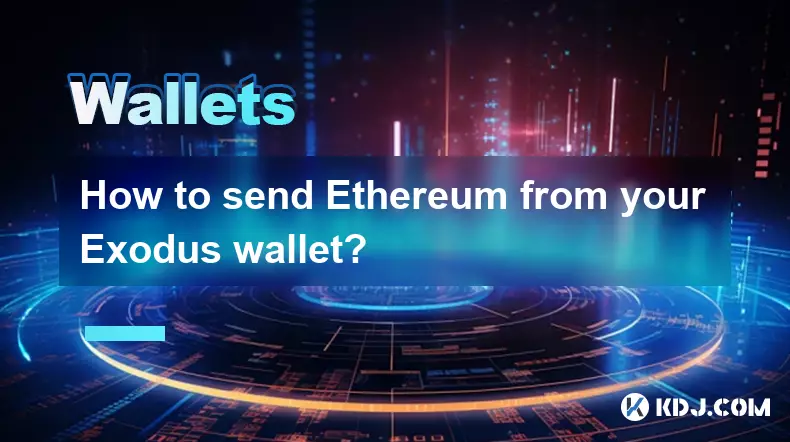-
 bitcoin
bitcoin $115469.758015 USD
0.29% -
 ethereum
ethereum $4536.640472 USD
-1.35% -
 xrp
xrp $2.998395 USD
-1.04% -
 tether
tether $1.000274 USD
-0.02% -
 bnb
bnb $921.981367 USD
-0.33% -
 solana
solana $235.464989 USD
-2.21% -
 usd-coin
usd-coin $0.999955 USD
0.02% -
 dogecoin
dogecoin $0.269732 USD
-2.68% -
 tron
tron $0.345815 USD
-0.84% -
 cardano
cardano $0.865586 USD
-2.26% -
 hyperliquid
hyperliquid $53.710810 USD
0.30% -
 chainlink
chainlink $23.619558 USD
-1.81% -
 ethena-usde
ethena-usde $1.001114 USD
-0.01% -
 sui
sui $3.539388 USD
-3.58% -
 avalanche
avalanche $29.724102 USD
1.08%
Is the Trezor wallet safe from hackers?
Trezor wallets keep private keys offline, require manual transaction confirmation, and use PIN/shuffled keypad for security against malware and remote attacks.
Sep 15, 2025 at 09:07 am

Understanding the Security Framework of Trezor Wallets
1. Trezor wallets utilize a hardened microcontroller that isolates sensitive operations from external interference, ensuring private keys never leave the device during transaction signing. This architecture significantly reduces the attack surface available to malicious actors attempting to extract cryptographic material.
2. Each transaction requires manual confirmation directly on the device’s screen, which acts as a critical defense against remote manipulation. Even if a user’s computer is compromised, an attacker cannot approve transactions without physical access to the Trezor and its confirmation interface.
3. The bootloader and firmware are cryptographically signed, preventing unauthorized modifications. Any attempt to flash malicious firmware will fail unless the attacker possesses the manufacturer’s private signing keys, which are closely guarded and stored offline.
4. Trezor implements a secure PIN entry mechanism that shuffles the keypad layout on each use, defending against keyloggers and screen capture tools. This dynamic input method thwarts common malware techniques used to steal access credentials.
5. Recovery phrases are generated using industry-standard BIP39, allowing secure backup and restoration. Users who store their 12- or 24-word seed offline in a secure location can recover funds even if the device is lost or compromised.
Physical and Environmental Threats
1. While Trezor devices are resistant to software-based attacks, they are not immune to physical tampering. Sophisticated adversaries with direct access to the hardware could potentially employ side-channel attacks or probe the circuitry to extract data.
2. Supply chain compromises remain a theoretical risk. If a device is intercepted before reaching the user, it could be modified to leak information. To mitigate this, Trezor encourages buyers to purchase from authorized distributors and verify packaging integrity.
3. The device does not have a battery or wireless connectivity, eliminating risks associated with Bluetooth, Wi-Fi, or cellular exploits. This air-gapped design ensures that communication occurs only through USB when the user initiates it.
4. Tamper-evident seals are used on packaging to indicate if a device has been opened. Users are advised to inspect these before setup, as any breach could suggest potential compromise.
5. In the event of loss or theft, the PIN protection ensures that without multiple incorrect attempts triggering a wipe, the device remains locked. This self-destruct mechanism after several failed entries enhances data protection.
Best Practices for Maximizing Security
1. Users should always initialize their Trezor on a clean, malware-free computer to prevent seed interception during setup. Compromised systems can record keystrokes or screen input during the initial configuration phase.
2. Never enter your recovery phrase into any website, software, or online form. Phishing sites often mimic legitimate wallet interfaces to trick users into revealing their seeds, leading to irreversible fund loss.
3. Regular firmware updates should be installed through official channels only. These updates often patch vulnerabilities and improve overall resilience against emerging threats in the cryptocurrency ecosystem.
4. Enabling passphrase protection adds an extra layer of security, effectively creating a hidden wallet. Without the correct passphrase, even someone with the seed and device cannot access funds.
5. Storing the recovery phrase on digital media or in cloud storage is strongly discouraged. Physical mediums such as metal backup plates kept in secure locations offer better long-term protection against data breaches.
Frequently Asked Questions
Can hackers access my Trezor wallet if my computer is infected?Trezor wallets are designed to remain secure even when connected to compromised systems. Since private keys never leave the device and transactions must be manually confirmed on the screen, malware cannot sign transactions without user interaction. However, malicious software could alter recipient addresses during the sending process if vigilance is lacking. Always verify the destination address on the Trezor display before confirming.
What happens if I lose my Trezor device?If you have securely backed up your recovery phrase, you can restore your wallet on another Trezor or compatible hardware wallet. Funds are tied to the private keys derived from the seed, not the physical device. Ensure the recovery phrase is stored safely and never digitized.
Is it safe to use a second-hand Trezor?Purchasing used hardware wallets carries significant risk. The device may have been tampered with, preloaded with malicious firmware, or have a compromised recovery seed. It is highly recommended to buy Trezor wallets only from official sources to ensure authenticity and security.
Does Trezor store my private keys online?No. Trezor devices are non-custodial and keep private keys entirely offline. The wallet interface may connect to online services to display balances and broadcast transactions, but cryptographic operations occur within the isolated environment of the device itself.
Disclaimer:info@kdj.com
The information provided is not trading advice. kdj.com does not assume any responsibility for any investments made based on the information provided in this article. Cryptocurrencies are highly volatile and it is highly recommended that you invest with caution after thorough research!
If you believe that the content used on this website infringes your copyright, please contact us immediately (info@kdj.com) and we will delete it promptly.
- Solana Treasury Purchases: A New Era for Crypto Investment?
- 2025-09-16 16:45:15
- Cardano, Chainlink, and NEAR Protocol: Unveiling the Latest Trends and Hidden Gems
- 2025-09-16 17:05:13
- Ripple's $25M Donation: A Boost for Small Businesses and Veterans
- 2025-09-16 16:45:15
- Coinbase, Stablecoins, and Bank Deposits: Separating Fact from Fiction, Ya Know?
- 2025-09-16 16:50:01
- Ethereum Price, Litecoin, and Remittix Presale: What's Moving the Crypto Markets?
- 2025-09-16 16:50:01
- Bitcoin Inflows Over 15 Years: A NYC Perspective on Crypto's Realized Cap Surge
- 2025-09-16 17:05:13
Related knowledge

How to check your crypto portfolio performance in Exodus?
Sep 14,2025 at 08:36am
Accessing Your Portfolio Overview in Exodus1. Launch the Exodus application on your desktop or mobile device and enter your password to unlock your wa...

How to sell crypto from your Exodus wallet?
Sep 13,2025 at 12:01pm
Selling Crypto from Your Exodus WalletExodus is a popular non-custodial wallet that supports a wide range of cryptocurrencies. While it doesn’t allow ...

Can I use a Ledger Nano X with the Exodus wallet?
Sep 16,2025 at 04:36am
No, you cannot use a Ledger Nano X directly with the Exodus wallet. While both are popular tools in the cryptocurrency space, they are not compatible ...

How to back up your Exodus wallet?
Sep 11,2025 at 04:19pm
Understanding Exodus Wallet Backup Basics1. Exodus is a software wallet that allows users to store, manage, and exchange various cryptocurrencies dire...

How to send Ethereum from your Exodus wallet?
Sep 16,2025 at 11:36am
Preparing Your Exodus Wallet for Ethereum Transfer1. Ensure your Exodus wallet is updated to the latest version available on the official website or a...

How to transfer funds from Binance to your Exodus wallet?
Sep 10,2025 at 10:19pm
Connecting Your Binance Account to Exodus Wallet1. Log in to your Binance account and navigate to the 'Wallet' section under the 'Funds' tab. Select '...

How to check your crypto portfolio performance in Exodus?
Sep 14,2025 at 08:36am
Accessing Your Portfolio Overview in Exodus1. Launch the Exodus application on your desktop or mobile device and enter your password to unlock your wa...

How to sell crypto from your Exodus wallet?
Sep 13,2025 at 12:01pm
Selling Crypto from Your Exodus WalletExodus is a popular non-custodial wallet that supports a wide range of cryptocurrencies. While it doesn’t allow ...

Can I use a Ledger Nano X with the Exodus wallet?
Sep 16,2025 at 04:36am
No, you cannot use a Ledger Nano X directly with the Exodus wallet. While both are popular tools in the cryptocurrency space, they are not compatible ...

How to back up your Exodus wallet?
Sep 11,2025 at 04:19pm
Understanding Exodus Wallet Backup Basics1. Exodus is a software wallet that allows users to store, manage, and exchange various cryptocurrencies dire...

How to send Ethereum from your Exodus wallet?
Sep 16,2025 at 11:36am
Preparing Your Exodus Wallet for Ethereum Transfer1. Ensure your Exodus wallet is updated to the latest version available on the official website or a...

How to transfer funds from Binance to your Exodus wallet?
Sep 10,2025 at 10:19pm
Connecting Your Binance Account to Exodus Wallet1. Log in to your Binance account and navigate to the 'Wallet' section under the 'Funds' tab. Select '...
See all articles










































































